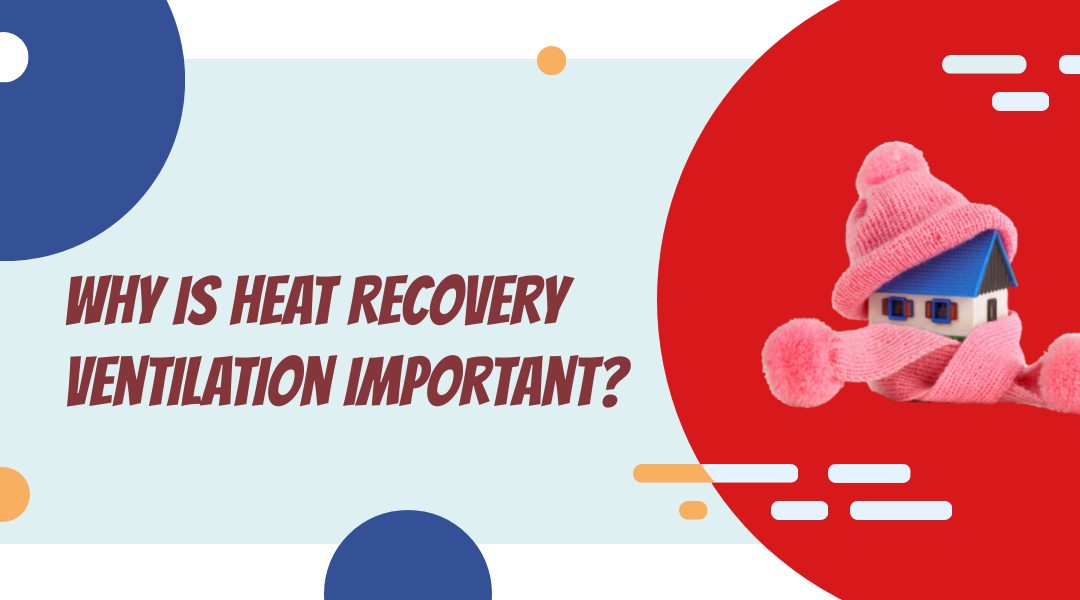What is Heat Recovery Ventilation?
Heat recovery ventilation is the process of heating incoming fresh air by using the outgoing indoor. Air is drawn from your home and mixed with the incoming fresh air in order to balance the temperatures. All homes breathe, air is constantly exchanged and replaced. Heat recovery ventilation helps to reduce the amount of heat transfer required when heating incoming air.
A typical heat recovery ventilator is comprised of two fans similar to a traditional ventilator, one dedicated to the outgoing indoor air and one bringing in the fresh air. The main difference is the addition of the heat exchange core. The core is used to exchange the heat from the indoor stale air being removed from the home and transferred to the cold air being brought into the home. This provides the home with a constant supply of filtered and heated fresh air.
Traditional Ventilation
Heat recovery ventilation systems are a subset of home ventilation systems in general. As the name implies, ventilation supplies your HVAC system with a steady stream of fresh air, while sending stale air out of your home. Without a ventilation system, the air in your home would grow progressively unhealthier over time.
With all that said, homeowners living in cold climates should understand that traditional ventilation systems may lead to efficiency problems. As the system draws cold winter air into your home, it causes your furnace to work harder in order to bring that air up to temperature. Meanwhile, the exhaust air contains precious heat being lost as it moves outdoors.
Heat Recovery Ventilation
A heat recovery ventilation system corrects this source of inefficiency through the use of a special heat exchanger. This exchanger allows the stale yet warm air leaving your home to transfer its heat to the cold incoming air. As a result, your HVAC system doesn’t have to work as hard to maintain an appropriate temperature.
The heat exchanger in a well-designed heat recovery ventilation system can capture 70 to 95 percent of the heat from the air leaving your home. This ensures that you and your family can enjoy the fresh air while still keeping your monthly energy bill as low as possible.
Benefits of Heat Recovery Ventilation
Heat recovery ventilation has numerous benefits for both your home and your quality of life. The key benefits are the removal of excess moisture and increased energy efficiency. Heat recovery ventilation is a valuable addition to any home for both the safety of the house and the conditions inside.
Excess Moisture
The use of heat recovery ventilation helps to remove built-up moisture within a home. Compared to natural ventilation, heat recovery ventilation pulls excessive moisture out in exchange for a healthier fresh air flow.
Air containing high levels of moisture are dangerous to the house structure and the health of the residents. Moisture within a home can lead to fungal, bacteria and mold growth. High levels of moisture can also break down the housing structure through the deterioration of the materials used in its construction. These can lead to not only hazards to the people living in the home, but the home itself.
Energy Efficiency
Heat recovery ventilation’s most effective benefit is the increased energy efficiency compared to traditional or natural ventilation. By using the heat from within the home, you reduce the energy loss from the ventilation process. Utilizing the heat already existing in a home reduces the strain on your home’s heating systems and energy costs.
Depending on the model, HRVs can recover up to 85 percent of the heat in the outgoing airstream, making these ventilators a lot easier on your budget than opening a few windows. source: Popular Mechanics
Heat recovery ventilation energy benefits are most effective in colder climates. The larger difference in the temperatures of air being exchanged the more value a heat ventilation system will have on your energy savings. The value of heat recovery ventilation can be understated compared to traditional ventilation when it comes to being energy efficient
Another key benefit of a heat recovery ventilation system is that it can integrate with a variety of different heating types, including gas and electric furnaces, radiant heat, baseboard heat, and even hot water heating systems. For more information about how a heat recovery ventilator can benefit your home, contact us today.

